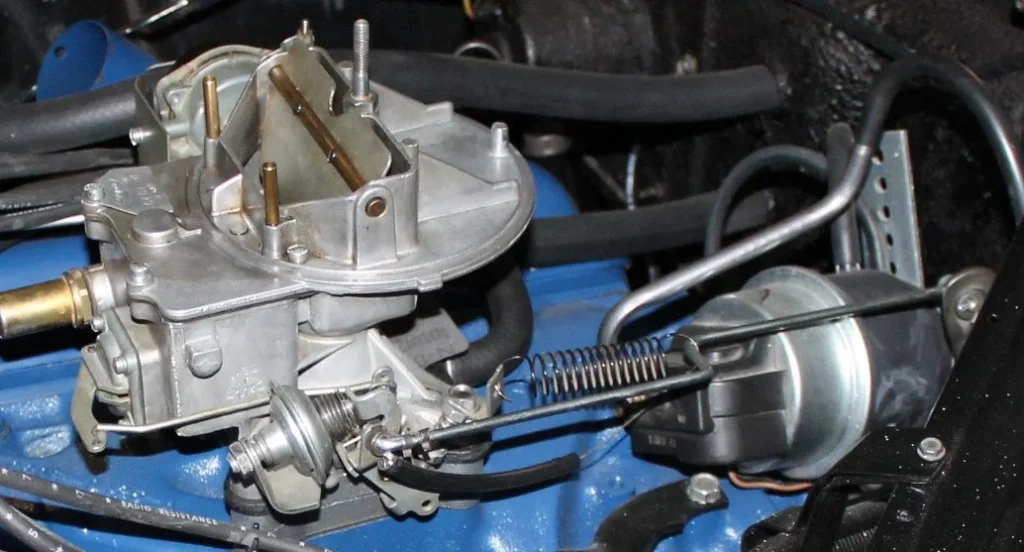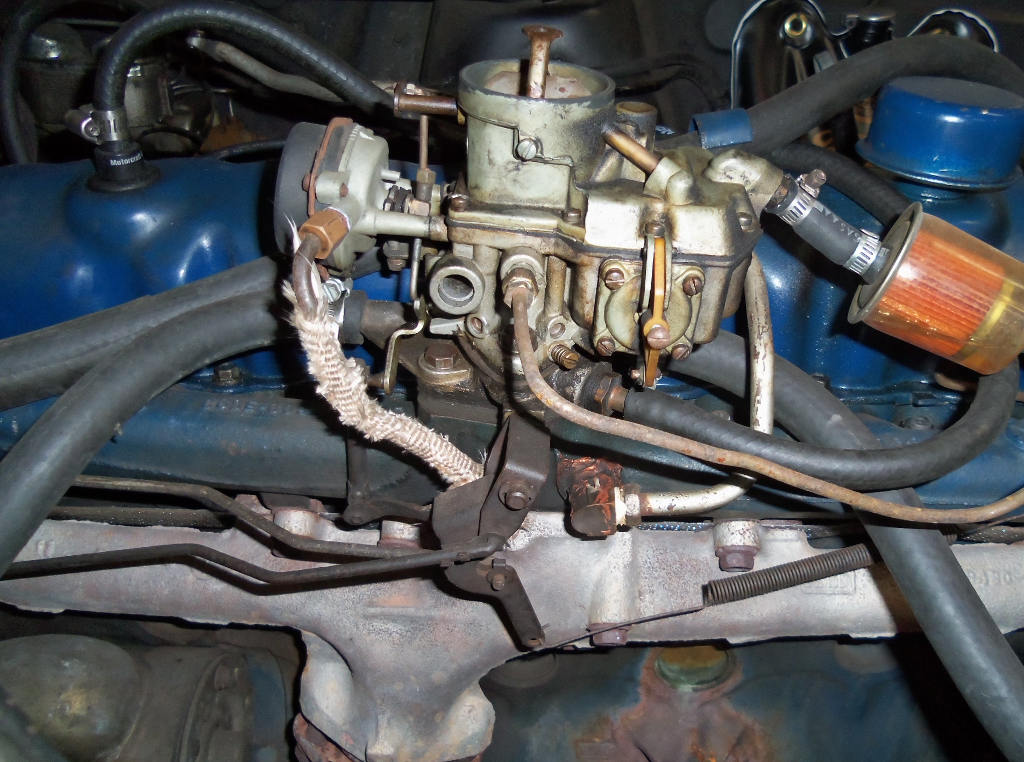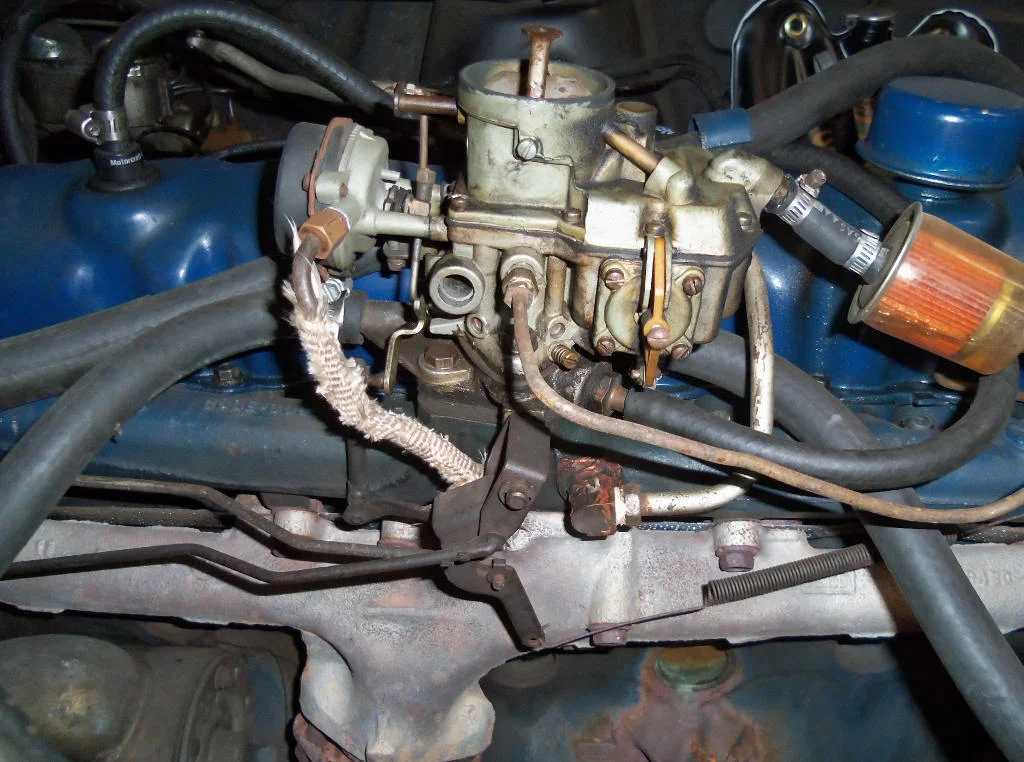How do you adjust the choke on a 1966 Mustang? To adjust the choke, ensure the engine is cold, then loosen the choke cap and set the choke plate with a small gap. Adjust the fast idle screw to set the proper idle speed.
When driving a classic car like the 1966 Mustang, keeping its performance optimized requires attention to various components, one of the most critical being the choke system. The choke is essential for controlling the air-fuel mixture during cold starts, ensuring the engine warms up correctly. However, as these cars age, you may find that the choke may need adjustment. Properly adjusting the choke on your 1966 Mustang can improve cold-start performance, prevent engine stalling, and ensure the car runs smoothly.
This article will guide you through the process of adjusting the choke on your 1966 Mustang, explain how the choke system works, provide troubleshooting tips for common choke issues, and help you maintain the carburetor system for optimal performance.

Contents
Choke System in a 1966 Mustang
The choke is a component in the carburetor system that regulates the amount of air entering the engine during the cold-start phase. When the engine is cold, the choke restricts the airflow, enriching the fuel mixture to help the engine start and run smoothly. As the engine warms up, the choke gradually opens, allowing the normal air-fuel mixture to take over.
Components of the Choke System
The choke system in your 1966 Mustang is made up of several key components that work together to regulate the air-fuel mixture during cold starts. Knowing how each part functions will help you diagnose and adjust the choke effectively for optimal engine performance.
- Choke Plate: The choke plate is a butterfly valve inside the carburetor that controls airflow. When the engine is cold, it remains closed to restrict airflow, ensuring the engine gets a rich fuel mixture.
- Choke Pull-Off: The choke pull-off is a vacuum-operated diaphragm that slightly opens the choke plate after starting the engine to prevent it from running too rich.
- Fast Idle Cam: The fast idle cam sets the idle speed when the engine is cold. The choke works in conjunction with the fast idle cam to keep the engine running at a higher RPM until it reaches operating temperature.
- Choke Spring: The choke spring is responsible for opening the choke plate as the engine warms up, ensuring the engine transitions to normal idle speed.

How to Adjust the Choke on a 1966 Mustang
Adjusting the choke on the 1966 Mustang ensures that the engine starts easily, idles properly, and runs smoothly. Here’s how to make those adjustments:
1. Preparation for Choke Adjustment
Before you begin adjusting the choke, it’s important to prepare the engine and gather the necessary tools. Here are the steps to follow:
- Ensure the Engine is Cold: It’s crucial that the engine is cold before making any adjustments. A warm engine may give inaccurate results.
- Gather Tools: You’ll need a flathead screwdriver and a wrench to adjust the choke.
2. Locate the Choke Assembly
In the 1966 Mustang, the choke assembly is typically located on the side of the carburetor. The Autolite 2100 carburetor, which is commonly used in the 1966 Mustang, has a manual choke that is controlled by a cable inside the car.
- Manual Choke: The manual choke has a knob that is usually located under the dashboard or near the driver’s seat. It can be pulled or pushed to engage or disengage the choke.
- Automatic Choke: If your Mustang has an automatic choke, the adjustment process may differ slightly. The automatic choke is controlled by a bi-metallic spring and uses vacuum pressure to regulate the choke plate’s movement.
3. Adjusting the Choke Plate
The choke plate controls the amount of air entering the carburetor. When the engine is cold, the choke plate should be fully closed. As the engine warms up, the choke plate gradually opens.
- Loosen the Choke Cap: Using a flathead screwdriver, loosen the screws that secure the choke cap in place.
- Set the Choke Plate: After loosening the choke cap, gently press the accelerator pedal to the floor once to set the choke. The choke plate should close completely. Adjust the cap so that the plate is slightly open, ensuring a small gap (usually around 1/8-inch) when the engine is cold.
Tip: You can use a drill bit of the appropriate size to measure the gap between the choke plate and the carburetor throat.
4. Adjusting the Fast Idle Cam
The fast idle cam sets the engine’s idle speed when the choke is engaged. A higher idle speed ensures that the engine remains running until it reaches operating temperature.
- Locate the Fast Idle Screw: The fast idle screw is located near the fast idle cam on the carburetor.
- Adjust the Idle Speed: With the choke engaged, turn the fast idle screw to adjust the idle speed. The recommended idle speed is typically around 1600 RPM, but refer to your car’s manual for the exact specifications.
Tip: If the engine speed is too high or low, make fine adjustments to the fast idle screw until the desired RPM is reached.
5. Adjusting the Choke Pull-Off
The choke pull-off ensures that the choke plate opens slightly after the engine starts to prevent the engine from running too rich. If the choke pull-off is not working correctly, it can cause the engine to stall or run poorly.
- Inspect the Choke Pull-Off: Start the engine and observe the choke plate. It should open slightly as the engine begins to run. If the choke pull-off is not working, the engine may stall.
- Adjust the Pull-Off: If the choke pull-off is not functioning properly, you may need to adjust it. This can be done by adjusting the linkage connected to the pull-off diaphragm to ensure it moves the choke plate correctly.
Troubleshooting Common Choke Problems
If you notice any of the following issues after adjusting the choke, there may be a problem with the choke system:
1. Engine Stalls After Starting: If the engine stalls shortly after starting, the choke plate may be too closed, causing the engine to run rich. To fix this, open the choke plate slightly to allow more air into the engine.
2. Hard Starting When Cold: If the engine is hard to start when cold, the choke plate may not be closing enough. This can result in a lean fuel mixture. Try closing the choke plate a bit more to enrich the fuel mixture for easier starting.
3. Fast Idle Issues: If the engine idles too high or too low when the choke is engaged, adjust the fast idle screw to regulate the idle speed. Ensure that the engine speed is within the recommended RPM range for smooth operation.
4. Choke Plate Not Opening Properly: If the choke plate doesn’t open as the engine warms up, the choke pull-off or the bi-metallic spring (for automatic chokes) may need adjustment. Check for damage or wear, and replace any faulty components.
Maintaining the Choke System
Proper maintenance of the choke system will ensure that it continues to function optimally. Here are a few tips for maintaining the choke system on your 1966 Mustang:
- Regularly Clean the Choke Components: Carbon buildup can clog the choke components, causing poor performance. Regular cleaning can prevent this.
- Inspect the Choke Pull-Off: Ensure that the choke pull-off diaphragm is intact and functioning properly.
- Check for Vacuum Leaks: Inspect the vacuum lines for leaks, as these can interfere with choke operation.
- Replace Worn Parts: If you notice any worn-out components, such as the choke plate or spring, replace them promptly to prevent further issues.
Frequently Asked Questions
Here are some FAQs about adjusting the choke on a 1966 mustang –
1. How do I know if my choke is set correctly?
To check, ensure that the choke plate is fully closed when the engine is cold. Then, adjust it so that there’s a small gap of about 1/8 inch when the engine is cold.
2. What happens if the choke is set too rich?
If the choke is set too rich, it will cause the engine to run rough, consume more fuel, and potentially stall after starting.
3. How often should I adjust the choke on my Mustang?
The choke should be adjusted when you notice hard starting, stalling, or poor idle performance. It’s also a good idea to inspect the choke system during regular maintenance.
4. Can I replace the choke system with an electric choke?
Yes, many 1966 Mustangs can be upgraded to an electric choke. Conversion kits are available and can provide more consistent choke operation.
5. What should I do if my choke pull-off is not working?
If the choke pull-off isn’t working, check the vacuum lines for leaks, and inspect the pull-off diaphragm for damage. Adjust the linkage or replace the part if necessary.
Conclusion
Adjusting the choke on a 1966 Mustang is a crucial part of maintaining optimal engine performance, particularly for cold starts. By understanding the choke system and following the appropriate adjustment steps, you can ensure that your Mustang runs smoothly and efficiently.




